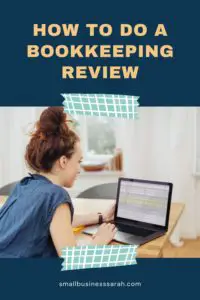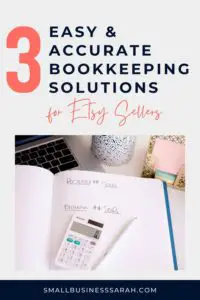“How do I pay myself from my small business?” is one of the most common questions I am asked. Related to this question is, how much can I pay myself? If you are sole-proprietor or a single-member LLC (not filing as an S-Corp), the answer is shockingly simple. You can pay yourself how much you would like and whenever you would like! Great news.
This post may contain my referral links. This post is for informational purposes only. See my disclosures here.
How does it work?
If you are a sole-proprietor or a single-member LLC (not filing as an S-Corp, you would know if you are!) you really can pay yourself whatever amount you would like, and how often you would like from your small business. Simply write a check from your business checking account to your personal, or transfer funds from your business account to your personal. It’s that easy.
Why is it so easy?
Bookkeeping and taxes never seem easy, so what’s the catch?! No catch. Here is why paying yourself is so easy. As a sole-proprietor or single-member LLC, you are taxed on your business profits. Your business profits at the end of the year are your Revenues minus your Expenses.
Owner distributions (paying yourself) are not expenses to your business, they are merely the withdraw of profits from your business. If you are using accounting software like QuickBooks, this is easy to see because you will record payments to yourself as an Owner’s Equity item in the account titled Owner’s Pay & Personal Expenses.
So if your business has a $10,000 profit and you withdraw all of it to pay yourself, you will still be taxed on your $10,000 profit. If your business has a $10,000 profit, and you withdraw none of it, you keep it as capital in your business, you will still be taxed on your $10,000 business profit.
Because Owner Distributions (paying yourself) have zero effect on your tax liability, you can withdraw as much or as little as you would like and as often as you would like. Remember, you still must keep track of your business revenues and expenses, and this is easiest to do if you have set-up separate business financial accounts.
As a quick side note, when you file your taxes you will file a Schedule C. My tax books get into a lot of Schedule C and tax filing info, but they are easy to read. I have one for bloggers, Etsy and product sellers, and Virtual Assistants. Good stuff.
A few tips
Although you are free to do what you like, here are some suggestions:
- Keep enough cushion in your business checking account for future projects or unexpected declines in revenue
- Transfer lump sums of money from your business checking to personal checking as opposed to little tiny bits.
- Set-up an automatic transfer to create a consistent method of paying yourself.
- Don’t use your business credit card for personal items and call that paying yourself. The IRS frowns on mixing business and personal finances in this way.
Need a lot more bookkeeping help and advice? Check out my bookkeeping services for small business owners.
Hopefully, now your know how to pay yourself from your small business. Pretty simple right?




